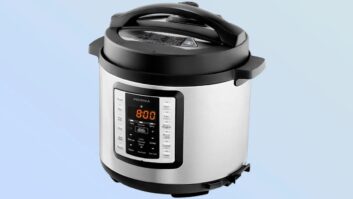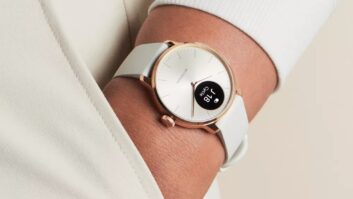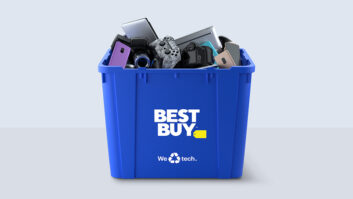For Best Buy, and big box retail in general, the past few weeks have been filled with “doom and gloom” comments circulating throughout the Web. While it is always easy (and popular) to make blind assertions about failure and dissolution these assertions almost always end up being “fact lite” with little beyond a bloggers’ poor experience, marginal understanding of the issues, or personal vendetta to back them up. So it is time to shine a little bright light on Best Buy, big box retail, and the fate of the consumer electronics market using actual, and factual, sales data and analysis – something we are experts on at NPD.
There is no doubt that the technology business is hurting. An industry built for double-digit growth and one that had passed over the plateau from providing luxury playthings to the necessities of modern life, has found the downside of being a necessity – market saturation. With saturation comes challenges in delivering unit volume growth to feed the costs and structures built up during the time of go-go increases. We are in those times today with no end to the challenges that every company in the electronics distribution channel, from factory to retailer and from brand to Web site, will face in the coming years in the U.S. We are seeing those challenges manifest themselves in meager growth (earlier this year we reported flat hardware sales across the entire consumer technology marketplace) and declining opportunities in categories that once dominated the industry.
Today’s problems in consumer technology are structural, they hit all retailers, all suppliers, and all brands equally. The change in product demand, and the shift in the customers’ view of the value and the necessity of their devices have caused a sea change in the market. Retailers, as the ones most connected to the consumer, feel these changes first – and when you are the biggest and the most successful retailer you feel the change ahead of the other retailers. There is no doubt that Best Buy is in that position. Their challenges today are not because they haven’t seen the change coming, or because they haven’t been preparing for it but instead because of how dramatically and swiftly the changes happened over the past year. Again make no mistake, every company in the technology space is dealing with these changes. Every retailer both online or brick and mortar, every brand, and every inch of the supply chain is looking for ways to move their business towards where product demand appears to be headed, and to date very few have found the right formula to make that happen.
So let’s look at the facts. Despite the massive upheaval in the technology business Best Buy has actually done pretty well in coping with, and managing, the changes to its business, preserving its legacy strengths while moving as rapidly as possible towards a future of which no one has an exceptionally clear vision. In 2011, Best Buy’s share of consumer technology revenue stood at 19 percent of hardware sales, according to NPD’s Consumer Tracking Service, exactly what it was in 2010 and what made it the leader in sales by a substantial margin. Best Buy also was the number one brick-and-mortar retailer online and gained almost one point in revenue share, now 22.4 percent, among retailers on the Web.
Best Buy also remains the dominant U.S. retailer for the key product categories. In computers Best Buy’s market share is 10 points higher than any other outlet that sells Windows notebooks and generates 2X more revenue from those sales than any other retailer. Best Buy is the number one non-manufacturer seller of Windows notebooks on the Web and gained almost 2 points in market share in 2011. Best Buy is the largest retailer of Apple notebooks, selling one in every four notebooks in the U.S., a number that is 6x larger than any other Apple reseller.
Despite an overall decline in the TV market Best Buy’s brick-and-mortar stores gained one point in market share in 2011. Best Buy grew revenue share as well and accounted for nearly one-in-three dollars spent on flat-panel TVs. In the fast-growing TV segment of 50″ and above, Best Buy’s market share was 31 percent and more than 3x higher than any other retailer. On the Web Best Buy gained 1.5 points of market share in TV sales in 2011.
Best Buy sold more tablets than any other retail store or Web site in 2011. Best Buy saw its unit share of the cell phone sales grow by 25 percent in 2011 and its share of smartphone sales increase by 50 percent. Best Buy sold one-in-four smartphones sold through multi-carrier, multi-brand stores in 2011, an increase of 50 percent. In addition, they were the single largest non-carrier outlet for smartphone sales.
Even in declining categories Best Buy is gaining share. The retail stores gained market share in both point-and-shoot (up almost one point) and the fast-growing DSLR camera segment up more than a quarter of a point) and they were the largest seller of DSLRs in the U.S. with twice the market share of their nearest competitor. In MP3 players Best Buy gained 2 points of unit share, and in headphones, another fast-growing emerging category, Best Buy’s revenue share increased by more than one-third of a point.
In all of the most important product categories, ones which represent more than 50 percent of U.S. consumer technology revenue, Best Buy by any objective measure is either gaining share rapidly or maintaining its industry leading position. While there are challenges ahead, Best Buy remains the dominant retailer and in the best position to succeed in the coming years.
Steve Baker is the VP for Industry Analysis at The NPD Group.












